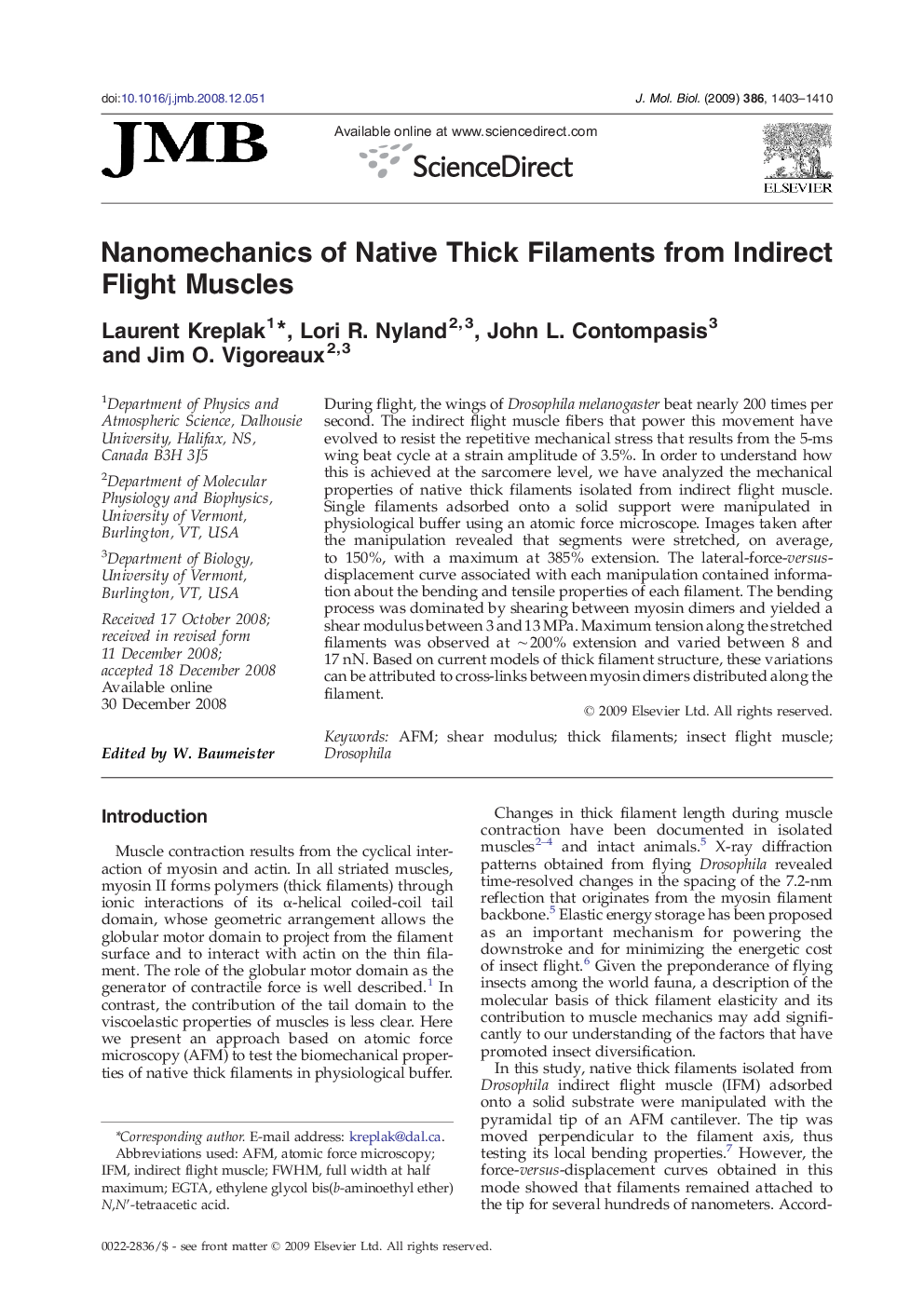| Article ID | Journal | Published Year | Pages | File Type |
|---|---|---|---|---|
| 2186844 | Journal of Molecular Biology | 2009 | 8 Pages |
During flight, the wings of Drosophila melanogaster beat nearly 200 times per second. The indirect flight muscle fibers that power this movement have evolved to resist the repetitive mechanical stress that results from the 5-ms wing beat cycle at a strain amplitude of 3.5%. In order to understand how this is achieved at the sarcomere level, we have analyzed the mechanical properties of native thick filaments isolated from indirect flight muscle. Single filaments adsorbed onto a solid support were manipulated in physiological buffer using an atomic force microscope. Images taken after the manipulation revealed that segments were stretched, on average, to 150%, with a maximum at 385% extension. The lateral-force-versus-displacement curve associated with each manipulation contained information about the bending and tensile properties of each filament. The bending process was dominated by shearing between myosin dimers and yielded a shear modulus between 3 and 13 MPa. Maximum tension along the stretched filaments was observed at ∼ 200% extension and varied between 8 and 17 nN. Based on current models of thick filament structure, these variations can be attributed to cross-links between myosin dimers distributed along the filament.
